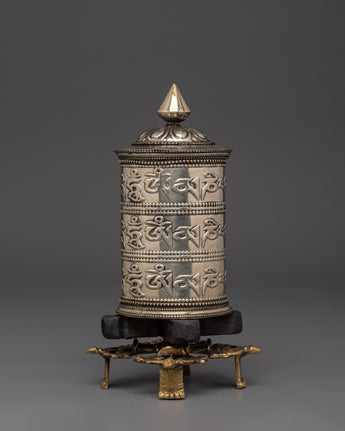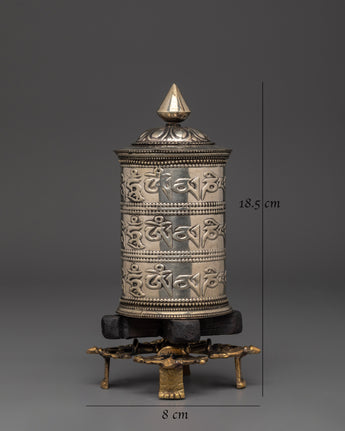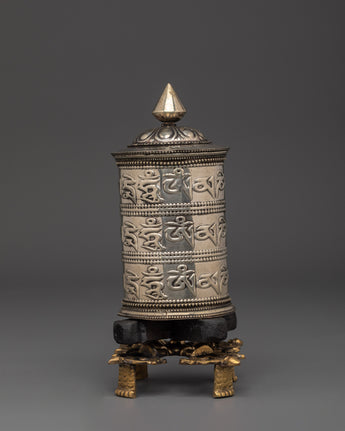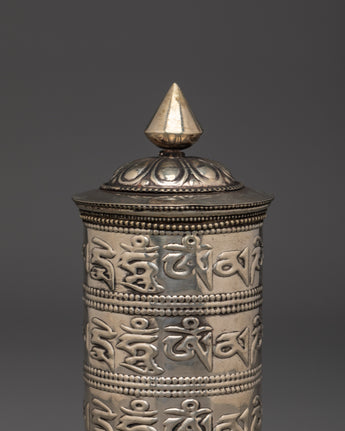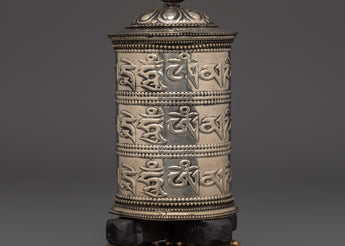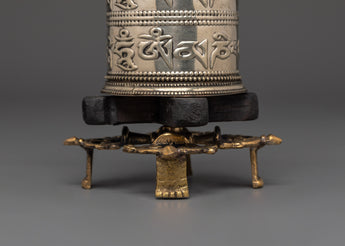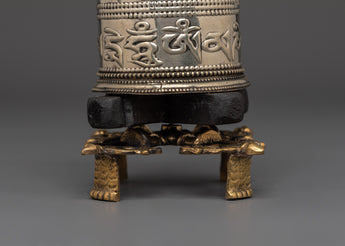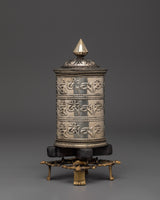

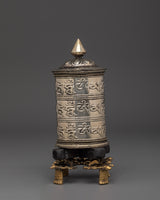
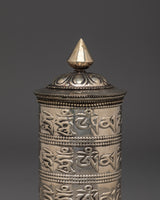
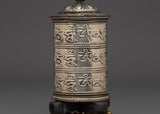
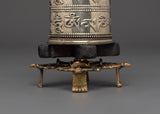

Prayer Wheel for Peace and Spiritual Balance | Deep Tibetan Spiritual Symbolism

100% AUTHENTIC

HANDMADE

FREE SHIPPING
Prayer Wheel for Peace and Spiritual Balance | Symbol of Peace
--------------------------------------------------------
Size: 18.5cm (Height) x 8cm (Width)
Weight: 0.25kg
Materials: Brass Body, Silver Coated
--------------------------------------------------------
About our Prayer Wheel
This Prayer Wheel for Peace and Spiritual Balance measures 18.5 cm tall, has an 8 cm diameter, and weighs 0.25 kg. It features a robust brass body and a beautiful silver-coated finish, adorned with intricate Tibetan calligraphy intricately carved into its surface. This prayer wheel is a stunning example of Tibetan Buddhist art, with sacred mantras that are said to bring spiritual blessings and tranquility.
Prayer wheels are used in Tibetan Buddhist rituals as a meditation tool, with each turn supposed to release beneficial energy and blessings. The wheel sits on a nicely crafted base, allowing for smooth and effortless spinning. The mix of silver plating and traditional Tibetan designs enhances both spiritual meaning and aesthetic appeal, making it an ideal addition to any home altar or meditation room.
This prayer wheel, whether used as a personal spiritual tool or as a meaningful gift, is a gorgeous piece of Tibetan craftsmanship that will offer you calm, peace, and positive energy.
Introduction to Prayer Wheel
A prayer wheel is cylindrical on a spindle and is used in Tibetan Buddhism. It is typically inscribed with the mantra "Om Mani Padme Hum" and rotated by hand as a form of spiritual practice and to accumulate merit. Spinning the wheel is believed to have the same spiritual benefits as verbally reciting the mantra. The use of prayer wheels is widespread in Tibetan Buddhism and has spread to other cultures.
How does the Buddhist Prayer Wheel benefit us?
The benefits associated with rotating the wheel are numerous. It promotes knowledge, compassion, and bodhicitta in the practitioner and improves siddhis (spiritual powers such as clairvoyance, precognition, etc.). The practitioner can repeat the mantra as often as possible while the wheel is rolling, maintaining a calm, meditative attitude. A Tibetan Buddhist tradition holds that after a practice session, one should dedicate any acquired merits to the benefit of all sentient beings. Then three times Om Ah Hum. This is usually among Tibetans after finishing any Buddhist practice, including the prayer wheel exercise.
How do you set up your own Buddhist Shrine?
• Find a clean, quiet, and uncluttered spot
• Set up an altar table and cover it with an altar cloth that calls to you
• Place your sacred item at the center


